Sunday 26 June 2011
Monday 20 June 2011
Celebrations..
1.FASCHING..
-Fasching is Munich's Carnival. The climax to the Fasching celebrations takes place on Tuesday 24th Febuary 2009.it was which came out of ancient Rome or Greece.On this day tradition dictates that women are allowed to cut off the tie of any man within reach. So guys, don't wear your favourite tie to work that day! and most of the festivities happen.



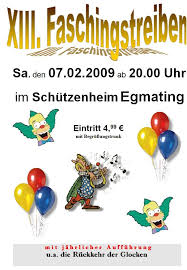
-On this day tradition dictates that women are allowed to cut off the tie of any man within reach. So guys, don't wear your favourite tie to work that day!
-Fasching Donuts - Munich
The ubiquitous food of Carnival season is donuts (in German: "Krapfen"). You can expect to see donuts piled high in the bakers and be offered them every day throughout the next month by colleagues and friends. The donuts come in all varieties containing sweets such as vanilla, marmelade, or chocolate. If you're on the Atkin's diet, bad luck!!
*website from: www.toytowngermany.com/wiki/fasching.
2.MARDI GRAS
-Mardi Gras in French referring to the practice of the last night of eating, fatty foods before the ritual fasting of the Lenten season. Popular practices include wearing masks and costumes, overturning social conventions, dancing, sports competitions, parades.
-In many areas, the term "Mardi Gras" has come to mean the whole period of activity related to the celebratory events.Pancakes and related fried breads or pastries made with sugar, fat and eggs are also traditionally consumed at this time in many parts of Latin America and the Caribbean.


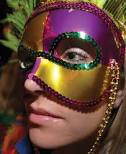
*www.mardigras.com.
OBON
-Obon is one of the most important Japanese traditions. People believe that their ancestors' spirits come back to their homes to be reunited with their family during Obon and pray for the spirits. For the reason, Obon is an important family gathering time, and many people return to their hometowns.
-Obon was originally celebrated around the 15th day of the seventh month in the lunar calendar. Obon periods are nowadays different in various regions of Japan. In most regions, Obon is celebrated around August 15th, and it typically begins 13th and ends 16th of August. In some areas in Tokyo, Obon is celebrated around July 15th, and it is still celebrated on the 15th day of the seventh month in the lunar calendar in many areas in Okinawa.
-Japanese people clean their houses and place a variety of food offerings such as vegetables and fruits to the spirits of ancestors in front of a butsudan (Buddhist altar). Chochin lanterns and arrangements of flower are usually placed by the butsudan.
-On the first day of Obon, chochin lanterns are lit inside houses, and people go to their family's grave to call their ancestors' spirits back home.On the last day, people bring the ancestor's spirits back to the grave, hanging chochin painted with the family crest to guide the spirits. It's called okuri-bon.
-Toro Nagashi (floating lanterns) is a tradition often observed during Obon. People send off their ancestors' spirits with the lanterns, lit by a candle inside and floated down a river to the ocean. Also, Bon Odori (folk dance) is widely practiced on Obon nights. Styles of dance vary from area to area, but usually Japanese taiko drums keep the rhythms. People go to their neighborhood Bon Odori held at parks, gardens, shrines, or temples, wearing yukata (summer kimono) and dance around a yagura stage. Anyone can participate in Bon Odori, so join the circle and imitate what others are doing.
Top Obon Events in Japan.

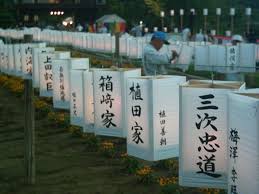
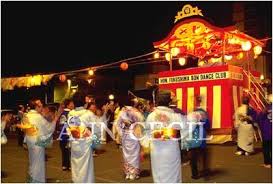
-*gojapan.about.com/cs/japanesefestivals/a/obonfestival.htm.
4. INTI RAYMI.
--Inti Raymi was the biggest, most important festivity ever carried out in Inca (Inka) times.
-The Inca emperor - Sapa Inca - was worshiped as a god who was descendant of the Sun god - Apu Inti.
The living representative of Inti on Earth.
-Inti Raymi marks the beginning of a new year.
It was carried out at the end of the potato and maize (corn) harvest in order to thank the sun for the abundant crop, or otherwise to ask for a successful one during next season.
The date was June 24th.

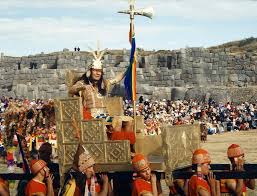
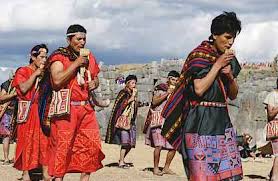
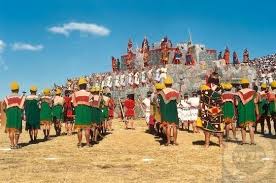
*www.unique-southamerica-travel-experience.com/inti raymi.
5. SONGKRAN
-Songkran Festival is the traditional Thai New Year celebrated on April 13th. Families and friends gather to celebrate by visiting temples, sprinkling water on Buddha images in reverence, and sprinkling water on each other's hands as an act of wishing good luck.
-In recent years, the tradition of sprinkling water has been interpreted by youngsters as a great excuse for a water fight, and it is not uncommon to have buckets and containers of water thrown at you by teams of merry makers in the backs of trucks as you make your way down the street - particularly in major tourist areas like PatONG.
-

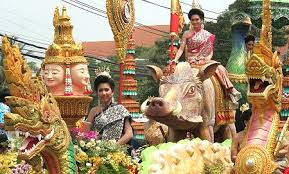
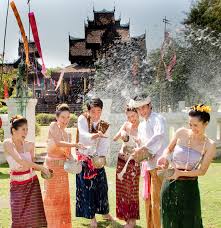
-Fasching is Munich's Carnival. The climax to the Fasching celebrations takes place on Tuesday 24th Febuary 2009.it was which came out of ancient Rome or Greece.On this day tradition dictates that women are allowed to cut off the tie of any man within reach. So guys, don't wear your favourite tie to work that day! and most of the festivities happen.

-On this day tradition dictates that women are allowed to cut off the tie of any man within reach. So guys, don't wear your favourite tie to work that day!
-Fasching Donuts - Munich
The ubiquitous food of Carnival season is donuts (in German: "Krapfen"). You can expect to see donuts piled high in the bakers and be offered them every day throughout the next month by colleagues and friends. The donuts come in all varieties containing sweets such as vanilla, marmelade, or chocolate. If you're on the Atkin's diet, bad luck!!
*website from: www.toytowngermany.com/wiki/fasching.
2.MARDI GRAS
-Mardi Gras in French referring to the practice of the last night of eating, fatty foods before the ritual fasting of the Lenten season. Popular practices include wearing masks and costumes, overturning social conventions, dancing, sports competitions, parades.
-In many areas, the term "Mardi Gras" has come to mean the whole period of activity related to the celebratory events.Pancakes and related fried breads or pastries made with sugar, fat and eggs are also traditionally consumed at this time in many parts of Latin America and the Caribbean.
*www.mardigras.com.
OBON
-Obon is one of the most important Japanese traditions. People believe that their ancestors' spirits come back to their homes to be reunited with their family during Obon and pray for the spirits. For the reason, Obon is an important family gathering time, and many people return to their hometowns.
-Obon was originally celebrated around the 15th day of the seventh month in the lunar calendar. Obon periods are nowadays different in various regions of Japan. In most regions, Obon is celebrated around August 15th, and it typically begins 13th and ends 16th of August. In some areas in Tokyo, Obon is celebrated around July 15th, and it is still celebrated on the 15th day of the seventh month in the lunar calendar in many areas in Okinawa.
-Japanese people clean their houses and place a variety of food offerings such as vegetables and fruits to the spirits of ancestors in front of a butsudan (Buddhist altar). Chochin lanterns and arrangements of flower are usually placed by the butsudan.
-On the first day of Obon, chochin lanterns are lit inside houses, and people go to their family's grave to call their ancestors' spirits back home.On the last day, people bring the ancestor's spirits back to the grave, hanging chochin painted with the family crest to guide the spirits. It's called okuri-bon.
-Toro Nagashi (floating lanterns) is a tradition often observed during Obon. People send off their ancestors' spirits with the lanterns, lit by a candle inside and floated down a river to the ocean. Also, Bon Odori (folk dance) is widely practiced on Obon nights. Styles of dance vary from area to area, but usually Japanese taiko drums keep the rhythms. People go to their neighborhood Bon Odori held at parks, gardens, shrines, or temples, wearing yukata (summer kimono) and dance around a yagura stage. Anyone can participate in Bon Odori, so join the circle and imitate what others are doing.
Top Obon Events in Japan.
-*gojapan.about.com/cs/japanesefestivals/a/obonfestival.htm.
4. INTI RAYMI.
--Inti Raymi was the biggest, most important festivity ever carried out in Inca (Inka) times.
-The Inca emperor - Sapa Inca - was worshiped as a god who was descendant of the Sun god - Apu Inti.
The living representative of Inti on Earth.
-Inti Raymi marks the beginning of a new year.
It was carried out at the end of the potato and maize (corn) harvest in order to thank the sun for the abundant crop, or otherwise to ask for a successful one during next season.
The date was June 24th.

*www.unique-southamerica-travel-experience.com/inti raymi.
5. SONGKRAN
-Songkran Festival is the traditional Thai New Year celebrated on April 13th. Families and friends gather to celebrate by visiting temples, sprinkling water on Buddha images in reverence, and sprinkling water on each other's hands as an act of wishing good luck.
-In recent years, the tradition of sprinkling water has been interpreted by youngsters as a great excuse for a water fight, and it is not uncommon to have buckets and containers of water thrown at you by teams of merry makers in the backs of trucks as you make your way down the street - particularly in major tourist areas like PatONG.
-
Small children delight in equipping themselves with water guns and spraying anyone who comes in their path - no one is exempt! Remember this date when you are in Patong and leave your cameras and anything likely to suffer water damage behind in your hotel room, because you will get wet.
Small children delight in equipping themselves with water guns and spraying anyone who comes in their path - no one is exempt! Remember this date when you are in Patong and leave your cameras and anything likely to suffer water damage behind in your hotel room, because you will get wet.
-Songkran is a Sanskrit word in Thai form which means the entry of the sun into any sign of the Zodiac.
-Songkran is a fixable feast on the solar calender. It begins on the 13th April and ends on the 15th April, but occasionally in certain years on the 16th April.
*www.Paknam.com.
Sunday 19 June 2011
Festival of Hari Raya Aidifitri..
Hari Raya is celebrated by all Muslims at a syawal every year. Hari Raya Aidilfitri also known as a day of fasting, the day to celebrate the end of the month of Ramadhan. Symbol of the Aidilfitri is ketupat. Ketupat is rice steamed in woven coconut leaves or the palas leaves are usually eaten with rendang.
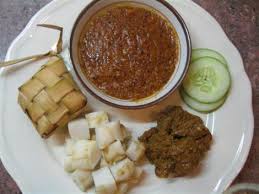

for the clothes, the clothes Malay for men, baju kurung and kebaya for women is compulsory clothing to celebrate Aidilfitri.


Hari Raya is celebrated with a lively. Shopping Mall will provide sales and decorated with ornaments on a large scale. Songs will also be turned on the radio and on television. Shows that focus on Aidilfitri will be displayed. school, and business premises will be closed for a week for Aidilfitri.
In the main roads and highways throughout the country, congestion will occur due to the influx of city residents who returned to their hometown to celebrate Aidilfitri with their relatives and families. This phenomena is also known as Back village.

for the clothes, the clothes Malay for men, baju kurung and kebaya for women is compulsory clothing to celebrate Aidilfitri.
Hari Raya is celebrated with a lively. Shopping Mall will provide sales and decorated with ornaments on a large scale. Songs will also be turned on the radio and on television. Shows that focus on Aidilfitri will be displayed. school, and business premises will be closed for a week for Aidilfitri.
In the main roads and highways throughout the country, congestion will occur due to the influx of city residents who returned to their hometown to celebrate Aidilfitri with their relatives and families. This phenomena is also known as Back village.
superstitions in the malay community
Too many superstitions practiced by the community first and so carried away in modern times.
including:
1. Harelip.
-the belief of the ancients said that if the deliver their oral cleft is because fish caught on the hook when the wife is pregnant.

2. Eating dried fish after childbirth.
- The belief of the ancient old saying that mothers after childbirth need to drink herbal medicine and only eat dried fish with white rice only.
3. The ancients say that children are not allowed to eat sour foods for fear of child's brain has been slow.
4.Placenta
- Who used to be planting the placenta before birth mother was home because if planted far away the fear of getting that far mate.
including:
1. Harelip.
-the belief of the ancients said that if the deliver their oral cleft is because fish caught on the hook when the wife is pregnant.

2. Eating dried fish after childbirth.
- The belief of the ancient old saying that mothers after childbirth need to drink herbal medicine and only eat dried fish with white rice only.
3. The ancients say that children are not allowed to eat sour foods for fear of child's brain has been slow.
4.Placenta
- Who used to be planting the placenta before birth mother was home because if planted far away the fear of getting that far mate.
Subscribe to:
Posts (Atom)
